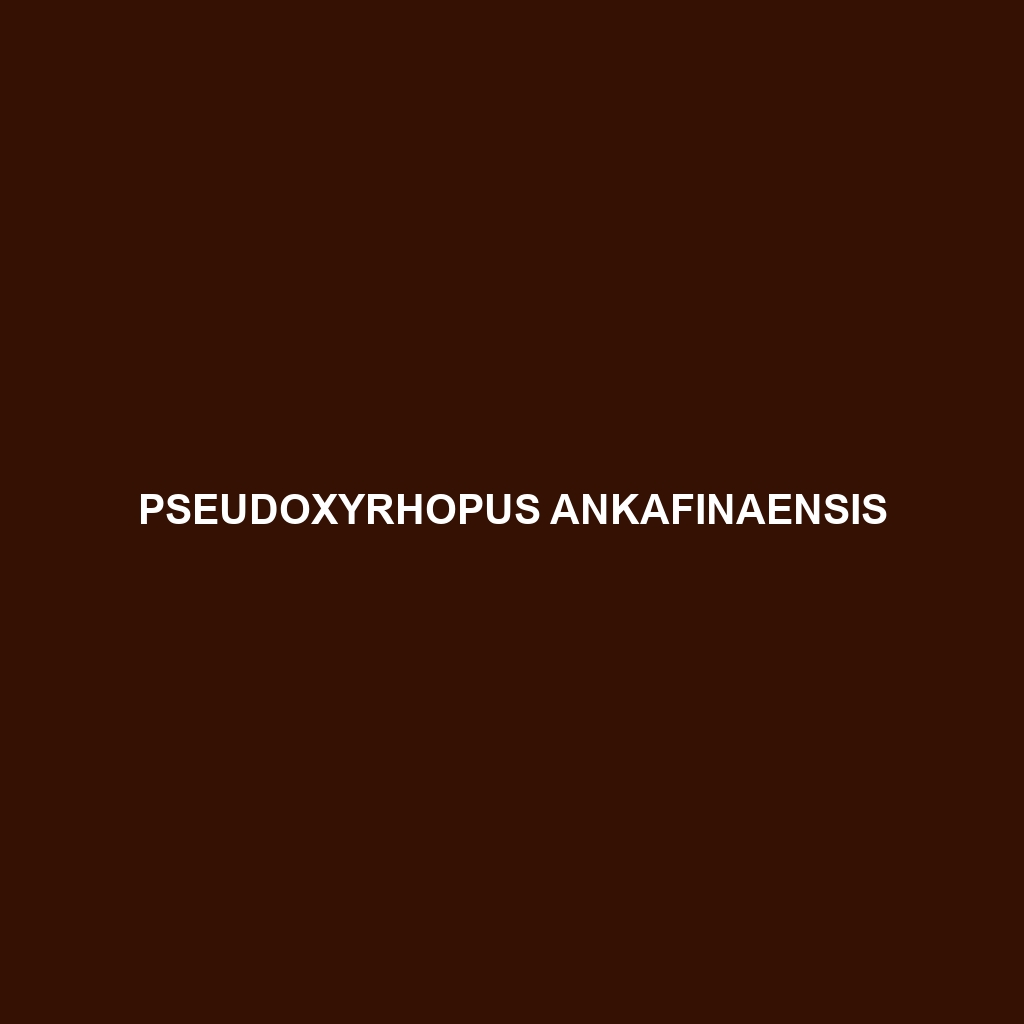<p><b>Pseudoxyrhopus ankafinaensis</b> is a striking insectivorous snake native to the rainforests of northeastern Madagascar, known for its slender body, vibrant cryptic coloration, and nocturnal hunting habits. With a unique reproductive strategy and key ecological role, this vulnerable species faces threats from habitat loss, highlighting the urgent need for conservation efforts.</p>
Tag: Madagascar wildlife.
Pseudoxyrhopus analabe
<p><b>Pseudoxyrhopus analabe</b>, a vulnerable species native to Madagascar's rainforests, is a small to medium-sized, nocturnal snake known for its striking camouflage and arboreal habits. Primarily an insectivore, it plays a crucial role in regulating invertebrate populations and maintaining ecosystem balance.</p>
Pseudoxyrhopus ambreensis
Pseudoxyrhopus ambreensis is a slender, arboreal snake native to Madagascar's rainforests, reaching lengths of 80 to 120 cm and displaying unique camouflage patterns in shades of brown, yellow, and cream. This nocturnal predator plays a vital role in its ecosystem by controlling prey populations and serves as a food source for larger animals, while also facing conservation challenges due to habitat loss.
Pseudoacontias menamainty
<p>The <b>Pseudoacontias menamainty</b>, a vulnerable species native to Madagascar, features a snake-like body reaching 20-30 cm in length, with a coloration of browns and deep grays for effective camouflage. Primarily nocturnal and carnivorous, it inhabits diverse environments, preying on insects while playing a vital role in maintaining ecosystem balance through its burrowing and predation behavior.</p>
Pseudoacontias madagascariensis
<strong>Madagascar Legless Skink (Pseudoacontias madagascariensis)</strong>: This unique, nocturnal reptile, measuring 20-30 cm, thrives in Madagascar's diverse habitats, showcasing a serpentine body with smooth scales and a diet primarily consisting of ants and termites. Currently listed as vulnerable, it plays a crucial ecological role by regulating insect populations and contributing to soil aeration.
Pseudoacontias angelorum
<p><b>Pseudoacontias angelorum</b> is a slender, nocturnal species endemic to Madagascar, thriving in humid rainforests and savannas. With its dark brown or olive skin and unique burrowing behavior, this vulnerable insectivore plays a crucial role in maintaining ecosystem balance by controlling pest populations and aerating the soil.</p>
Pristurus simonettai
<p><b>Pristurus simonettai</b>, or Simonetta's Pristurus, is a vibrant green or brown lizard native to Madagascar's coastal ecosystems, thriving in humid rainforests and savannas. This nocturnal insectivore plays a crucial role in pest control and features unique adaptations like a prehensile tail and the ability to change color for camouflage.</p>
Pristurus crucifer
The <b>Pristurus crucifer</b>, or <i>cross-marked gecko</i>, is a striking, insectivorous gecko native to the rainforests and savannas of eastern Africa, featuring unique dark cross markings and a slender physique. Known for its nocturnal behavior and agile hunting skills, this gecko plays a vital role in maintaining ecological balance while thriving in humid, diverse habitats.
Pristurus collaris
<p><b>Pristurus collaris</b>, commonly known as the collar lizard, is a vibrant and adaptable species found in the dry savannas and spiny forests of Madagascar and the Indian Ocean islands. These diurnal, insectivorous lizards exhibit distinctive coloration for camouflage, possess exceptional climbing abilities, and play a crucial role in maintaining the ecological balance by controlling insect populations.</p>
Pyxis planicauda
<b>Pyxis planicauda</b>, commonly known as the flat-tailed tortoise, is a vulnerable species native to the rainforests and savannas of Madagascar. Characterized by its distinctive flat carapace, nocturnal behavior, and herbivorous diet, this tortoise plays a vital role in its ecosystem through seed dispersal and soil aeration.








